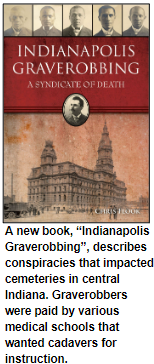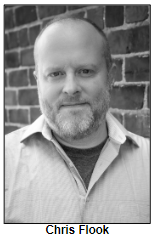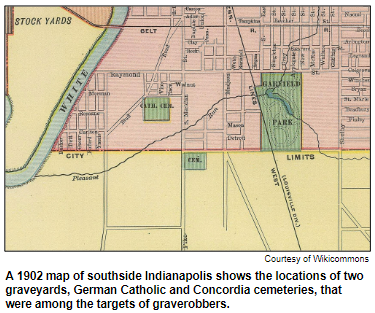Hoosier History Live is an independently produced new media project about Indiana history, integrating podcasts, website www.HoosierHistoryLive.org, weekly enewsletter, and social media. Its original content comes initially from a live with call in weekly talk radio show hosted by author and historian Nelson Price. You can hear the show live Saturdays from noon to 1 pm ET at WICR 88.7 fm or stream the show live at the WICR HD1 app on your phone, or at our website.
June 08, 2024
Marquis de Lafayette, his farewell tour and Indiana

 All across the state, sites are named in his honor. The city of Lafayette, for example. In Indianapolis, there's Lafayette Road. In the city of Princeton in southwestern Indiana, there's a Lafayette Park.
All across the state, sites are named in his honor. The city of Lafayette, for example. In Indianapolis, there's Lafayette Road. In the city of Princeton in southwestern Indiana, there's a Lafayette Park.
And the Marquis de Lafayette, hailed as a hero of both the American Revolution and the French Revolution, is the only individual to have two counties in Indiana with names associated with him: Fayette County and LaGrange County. LaGrange was the name of an estate in France owned by Marquis de Lafayette (1757-1834).
Now, admirers across the country, including Hoosiers, are preparing to spotlight the 200th anniversary of Gen. Lafayette's grand farewell tour of 1824-25, during which the distinguished "guest of the nation" returned to America after his triumphs in the Revolutionary War. He traveled 6,000 miles and visited all 24 states that comprised the country then, including Indiana. Lafayette's interactions with the Hoosier state were brief but eventful.
They included a series of events in Jeffersonville and, a few days prior, the sinking of a steamboat on the Ohio River with the distinguished visitor aboard. Lafayette, a French nobleman, was rescued via a lifeboat, but spent a night, along with other wet, stranded passengers and crew, sleeping outdoors near Cannelton, Ind. That site is now called Lafayette Spring.
To explore the Marquis de Lafayette, his legacy and farewell tour, including its Indiana connections, Nelson will be joined by two guests:

-
Richard Stroup of Lebanon, Ind., who is the outreach coordinator in the Midwest for the American Friends of Lafayette, a non-profit dedicated to preserving his legacy. Richard, who is retired from a career in community foundation work (including trail development) and agricultural finance, has been crisscrossing the state to share insights about the 200th anniversary of the farewell tour.
-
And Bonny Wise, a civic leader in Jeffersonville, where she is the chair of the city's Lafayette Bicentennial Farewell Tour Celebration. Major festivities are planned for May 2025 in Jeffersonville, 200 years after the May 1825 visit to the city by Lafayette, whose bond with George Washington during the Revolutionary War era often is described as a "father-son" relationship.
Lafayette, who was about 25 years younger than Washington, had turned 67 years old when he returned for the farewell tour. In Jeffersonville, he was greeted on the shore of the Ohio River "by a salute of thrice 24 guns, discharged from three pieces of artillery stationed at the river bank", according to a history of Clark County. He met with then-Gov. James Ray and Revolutionary War veterans before attending a public reception and an outdoor dinner at a table that was 220 feet long.
An ardent believer in equality and liberty, Lafayette, an abolitionist, is said to have greeted residents of Indiana, which had just become a state nine years earlier, with a wish for "rapid progress (for) this young state, a wonder of wonders".
Latest Podcast Available!

For a complete list of show podcasts and show enewsletters, please go to ARCHIVES on our website.
Your contributions help keep Hoosier History Live on the air, on the web, in your inbox, and in our ARCHIVES!



 It's a creepy chapter of Indiana's history, but probably appropriate to explore during the season known for all things ghastly. Graverobbing in central Indiana had been an "open secret" for decades before several arrests in 1902 and subsequent trials drew national attention, according to
It's a creepy chapter of Indiana's history, but probably appropriate to explore during the season known for all things ghastly. Graverobbing in central Indiana had been an "open secret" for decades before several arrests in 1902 and subsequent trials drew national attention, according to  Rings of graverobbers in Indianapolis and Hamilton County had been plundering small cemeteries in the Hoosier capital city and rural cemeteries. They sold corpses to various medical schools that were desperate for cadavers. (These medical schools predated the formation of – and were unaffiliated with – the I.U School of Medicine.) Chris Flook, who will be Nelson's studio guest, describes the grisly conspiracies in a new book, "
Rings of graverobbers in Indianapolis and Hamilton County had been plundering small cemeteries in the Hoosier capital city and rural cemeteries. They sold corpses to various medical schools that were desperate for cadavers. (These medical schools predated the formation of – and were unaffiliated with – the I.U School of Medicine.) Chris Flook, who will be Nelson's studio guest, describes the grisly conspiracies in a new book, " Chris, who writes a column titled "Bygone Muncie History" for the Muncie Star-Press and produces award-winning documentaries, has been a guest on previous "Hoosier History Live" shows. They have included two shows in 2014: a
Chris, who writes a column titled "Bygone Muncie History" for the Muncie Star-Press and produces award-winning documentaries, has been a guest on previous "Hoosier History Live" shows. They have included two shows in 2014: a 
